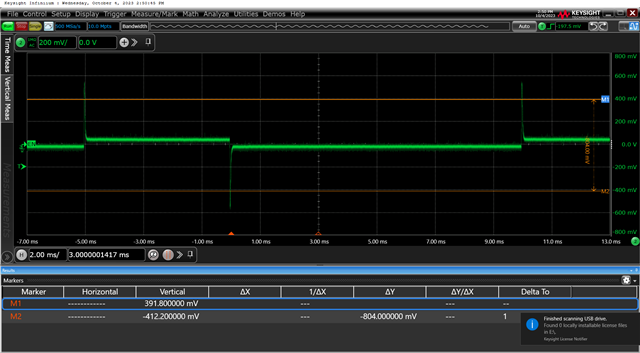Other Parts Discussed in Thread: LMR51430
There are two questions about this EVM.
1. Why both C8 and C9 are not placed on the EVM as below diagram? on the EVM bom, it looks both has placed.
2. Customer tried to test EVM without any component modified. the Vpk-pk is very high. Could you guide how to improve it efficient? thanks.
Dynamic Load Condition:
On time: 10mS
Off time: 5mS
S/R: 6A/uS
Test 1: 0.3A -> 2.5A, Vpk-pk : 807mV
Test 2: 0.3A -> 3.0A, Vpk-pk : 1.07V (waveform is as below)

Here are more waveforms tested.


